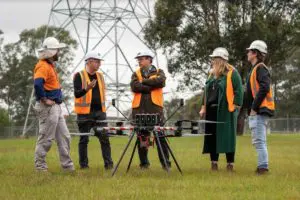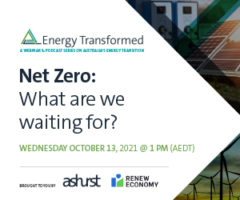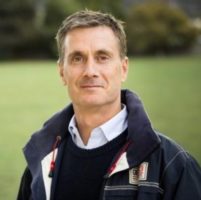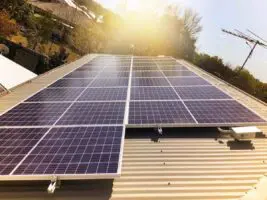The AGL chairman talks to RenewEconomy about the appointment of US energy industry veteran Andrew Vesey to succeed Michael Fraser as AGL CEO in February 2015, as the gentailer navigates the evolution of global and Australian energy markets to a model where the technology is smarter – and so are the customers – and where distributed energy is king.
RenewEconomy: Is AGL looking to continue business as usual with this appointment, or it is looking to the energy transition that most analysts say is inevitable in coming years?
Jerry Maycock: The answer is both. Giles, you well know that AGL has been largest generator in Australia and included in that portfolio is the largest privately owned renewable energy fleet. We clearly need to improve financial returns on existing asset base.
We are also pragmatists when it comes to evolution of the business model in Australia. It is pretty clear; you can debate the speed of transition, and certainly the technical solutions that will form part of it, but it’s pretty clear that a high degree of distributed generation and storage are likely to be a key feature.
And giving consumers the power to have better control of their consumption is going to be very important. AGL has 3.8 million customers and we think we are in a great position to help them make informed choices. If they choose to have AGL involved in helping to integrate those smart energy systems and manage those systems, that’s where we want to be. We want to be part of that.
RE: So Andrew Vesey has been selected with this in mind?
JM: Andrew Vesey has a very rich set of experience around all types of generation, in both thermal and renewable generation. He has a personal interest in evolving technology and in evolving business models.

We think he brings to the table a new set of ideas, and he will help AGL navigate through that evolution. No one knows exactly where it’s going or how quickly it will go – we want a leader who can steer us through that evolution.
RE: We have seen other industries grappling with this transition, media with the internet, telecoms industry with mobiles, film with digital photography, it is an intersecting time to be running one of these companies.
JM: It’s a great opportunity. I must say, we don’t expect the demise of the grid. For energy security proposes, and for for efficiency purposes, we should use that existing infrastructure for the life of those assets. It would be really crazy not to use that.
Most people will not be cutting themselves off from the grid – but they might not be using it very much. They might want options. But the challenge is to manage that transformation without throwing the baby out with the bath water.
RE: I agree, it would be terribly inefficient if the grid is not used. But given the cost of delivery of electricity in Australia, consumers may be faced with no other choice but to go off-grid. It is up to the utilities to price their product accordingly.
JM: There are a whole bunch of regulatory challenges and tariff design challenges. We will be a player and we try and hire people who can help the company navigate through these changes.
RE: How worried are you about the emergence of new companies with different business models and services, possibly more nimble?
JM: We love competition. We are all for it. That’s why we are lobbying against retail price regulation, because that stifles innovation.
RE: So what is it about Vesey that appeals to the AGL board?
JM: We like his experience and personal interest around technology; his leadership style and management skills – he’s a very good people manager, a very energetic character. He’s also a good cultural fit. He has worked in Australia before as head of Citi Power. We think he is a good fit.
RE: Was it wrong to invest so heavily in coal, with the Loy Yang and Macquarie Generation purchases? I understand the attraction for making money in the short term, but as far as positioning for the future, and for the atmospherics of such a purchase at a time when the world is moving away from coal…?
JM: We don’t think so. We think that these low-cost thermal generators are going to be around for longer than most people think. We’ve only gone for low-cost end of curve. We think it’s in our shareholders’ best interests to have that mix and to manage our exposure, given our large load. We wanted to internalise some of those exposures with internal hedges.










